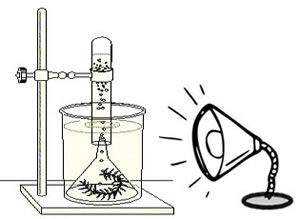If you want to measure how much light is available for photosynthesis, the method shown in your video is fine. If you want to measure photosynthesis as it occurs, I think the easiest way is to use a water dwelling photosynthetic plant and measure the oxygen produced, as in http://biologycorner.com/worksheets/photosynthesis_rate.html.

You might be able to do this by just using an oxygen electrode in the water, or if you capture the gas, you can measure the gas volume, probably by an optical interruptor or float mechanism. The rate of gas production, or the derivative of Volume, is the speed of photosynthesis.
Other than that, the only other method I could think of would be to do research to determine if the electrochemistry of photosynthesis changed membrane potentials in plant cells, and if so, use techniques such as are mentioned in THIS QUESTION. Brief research shows that there are electrical potential changes associated w/ photosynthesis: http://www.annualreviews.org/doi/pdf/10.1146/annurev.pp.28.060177.002443. Between that and the electrical potentential in plants ref I provide in the linked question, you have a reasonable start.
An additional useful resource might be Noninvasive Measurement of Membrane Potential Modulation in Microorganisms: Photosynthesis in Green Algae.Eun-Hee Lee et al. ACS Nano (Impact Factor: 12.03). 12/2013; DOI: 10.1021/nn405437z PubMed
http://www.researchgate.net/publication/259392613_Noninvasive_Measurement_of_Membrane_Potential_Modulation_in_Microorganisms_Photosynthesis_in_Green_Algae

